The numerous laws against Catholics included one which prevented them owning or inheriting property and banning leasing property for a period greater than 31 years. As a result post-Reformation burials of Catholics in Bath occurred in Anglican cemeteries until the establishment of the church in Old Orchard Street in 1809.
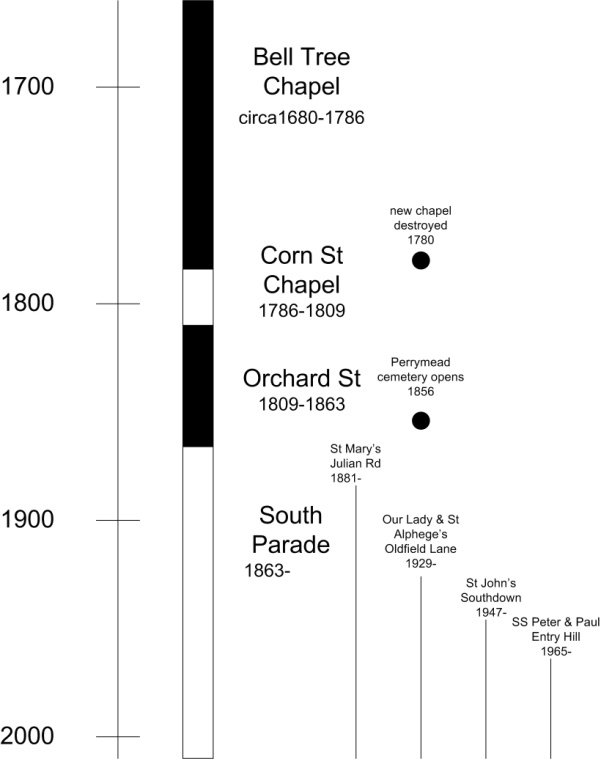
Timeline of Catholic chapels and churches in Bath
|
The Bell-Tree House chapel, dating from about 1680, stood on the corner of Binbury/Bilbury Lane and Beau Street opposite the end of Bellott’s Hospital. Because it was illegal for Catholics to own or inherit property, the building was in the name of private individuals. This restriction also precluded establishing a Catholic cemetery. A new chapel between St James Parade and Lower Borough Walls was due to be opened in 1780 but was destroyed on 8 Jun 1780 during Bath’s Gordon Riots. A chapel in Corn Street was used in the period 1786-1809 when the former Theatre Royal in Old Orchard Street (also known as Pierrepont Place) was bought. The Theatre Royal had moved to its current site is 1805. The site in Old Orchard Street was converted into a church with a floor being built over the theatre’s pit, giving a vaulted crypt which was used for burials. Rooms were also used for schools. St John the Evangelist, South Parade was consecrated on 6 Oct 1863.
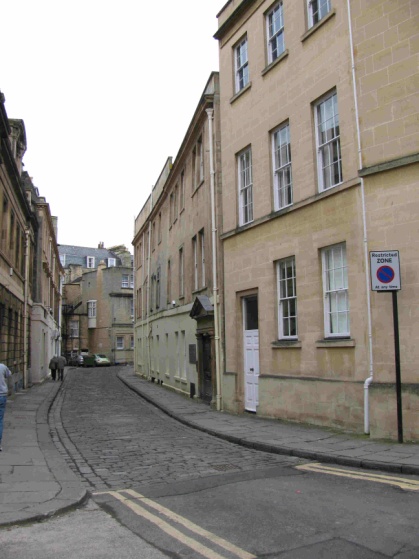
The Facade in Old Orchard Street
|
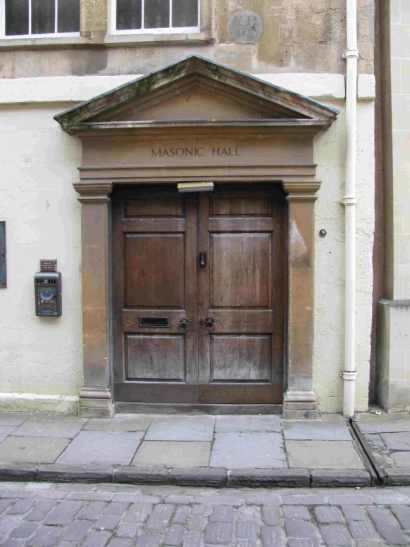
The entrance
|
The early parish records were destroyed in the Gordon Riots of 9-Jun-1780 during which the new chapel near St James’s Parade was set on fire. The names of parishioners buried in either Anglican cemeteries or the first St John’s (prior to 1856) are in a series of handwritten registers for the period 1809-1830 and a statutory register for the period 1843-1855. Thereafter there are a series of Libri Defunctorum which have pre-printed pro formas for entering names, ages and cemetery of burial. Perrymead cemetery opened in 1856.
The entries in these are in Latin until the 1960s. Not all entries are for burials in Perrymead cemetery. A separate set of indexes give the location of burials for Perrymead cemetery.
Old Orchard Street
In the period 1809-1856 burials occurred in the crypt of the church in Old Orchard Street. This crypt had been created when the building had been transformed from its previous use as the Theatre Royal (until 1805) by putting a floor in place of the pit. The burial registers indicate the location of graves by reference to the arches. When St John the Evangelist, South Parade was opened the building was sold and became (and remains) the Mason’s Hall. It is reported that most of the remains were reburied at Perrymead Cemetery but the crypt still contains a small number of memorials. However the registers note only a few individuals who were reburied. In the records, the graves are indicated by ‘J.area.plot’. There are 65 entries.
Perrymead Cemetery
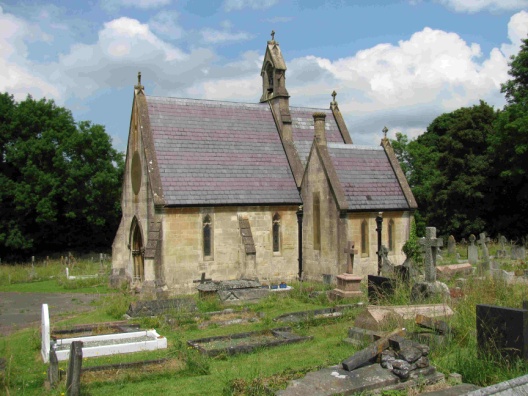
Chapel from the South
|
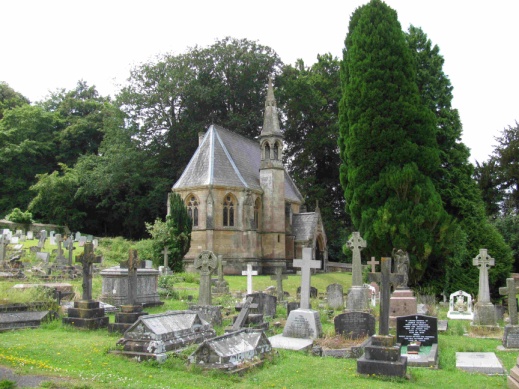
Eyre Chapel from the East
|
Perrymead cemetery is in Pope’s Walk, off Perrymead, Widcombe adjacent to Bath Abbey cemetery and is Bath’s Catholic cemetery. It opened in 1856 and is still in use, although most burials nowadays are at Haycombe cemetery. It has a chapel and a separate chapel for the Eyre family, members of which are buried in its crypt.
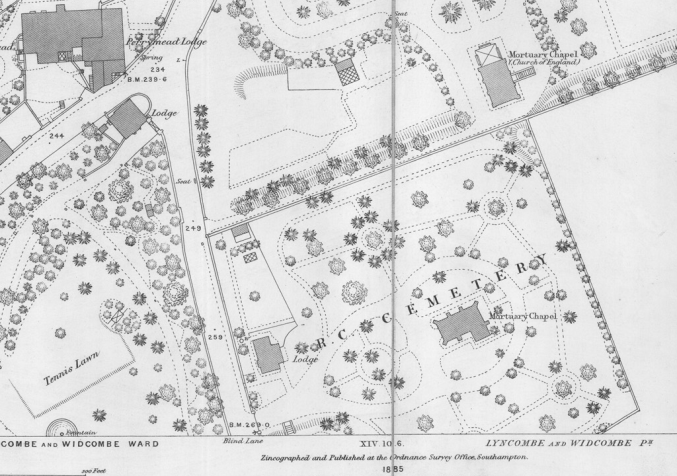
Layout of the cemetery in 1885
|
The registers and an index to the burials are held by the presbytery in South Parade; The cemetery is divided into arbitrary sections: central, north, south and east, with more recent northern and southern extensions. The separation between southern, northern and eastern sections is not evident on the ground.
The Ordnance Survey map of 1885 shows that the original intention was that there were various paths leading to circular features but these do not exist now.
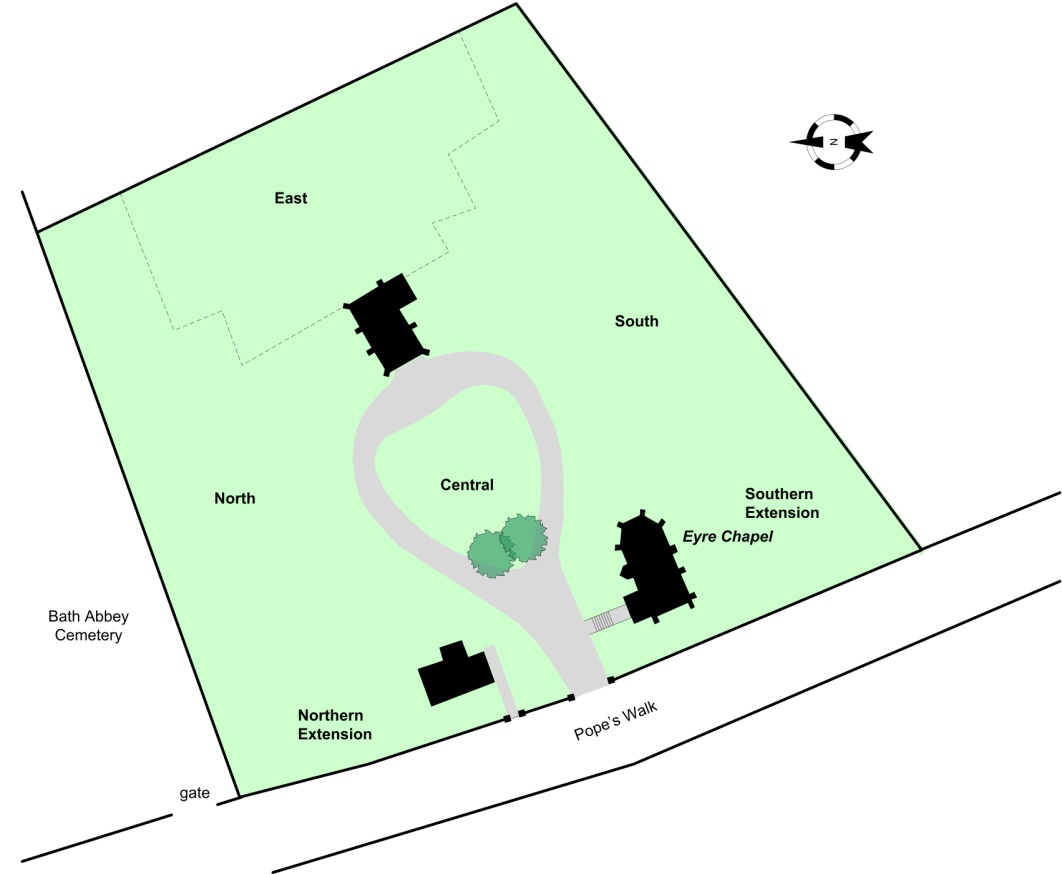
Arrangement of the cemetery
|
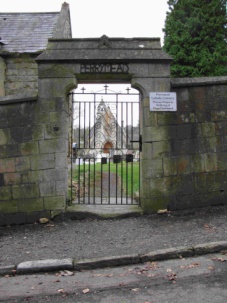 Gates to the cemetery
|
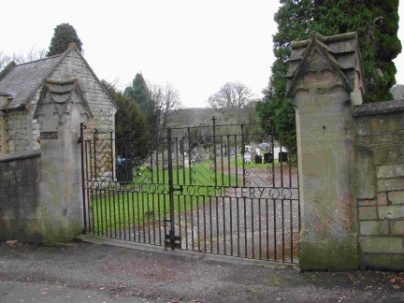 |
Documentation
The burial registers for Perrymead are at the Presbytery, St John’s the Evangelist, South Parade. (http://www.stjohnsrcbath.org.uk/) There are a series of volumes:
|
1
|
A Burial register 03-Dec-1809-1819
|
|
2
|
Register of Burials in the Vaults 1814-1843
|
|
3
|
Register of Burials 1818-1830
|
|
4
|
A conventional statutory burial register which covers the period Jul-1843 to Jun-1855
|
|
5
|
Liber Defunctorum Dec-1855 to Mar-1879 (160 pp)
|
|
6
|
Liber Defunctorum Mar-1879 to Feb-1906 (164 pp)
|
|
7
|
Liber Defunctorum Feb-1906 to present (376 pp)
|
|
8
|
Surname Index (1780-1855) ― date and name but no location
|
|
9
|
Surname Index (1856-1936) ― year and location of grave (with some ages)
|
|
10
|
Name Index (1937-) ― name, date, age and plot (section and number)
|
|
11
|
Grave indexes by section (central & south, north and east)
|
There are additional books on reserved graves and interment of ashes. There are also maps of the individual sections and an overall map. The maps are known to give planned locations which might not correspond to the exact ones.
The conventional burial register, with numbered pages and entries, relates to the second church in Old Orchard Street which was until 1805 the Theatre Royal and from 1886 the Masons’ Hall. The building became a Catholic church in 1809. This volume indicates the positions of the graves in relation to the arches in the crypt. The bodies are believed to have been removed to Perrymead when the place ceased to be used as a church, although a series of monuments remain. The register is explicit in only a small number of cases that the body was moved to Perrymead.
The first volume of Liber Defunctorum starts in 1855, so prior the opening of the current St John’s. The first entry that specifies the burial in ‘the Catholic Cemetery’ is dated 2-Sep-1856. The volume also has entries for parishioners who were buried in non-Catholic cemeteries and, post-1937, Haycombe. The entries do not, on the whole, give an abode as an address, usually only specifying a town. The entries are in Latin and take the form:

Example of an entry in a Liber Defunctorum
|
|
nno ___ die __ mensis ___ ______________[name]__________ ex ____[town]_____
ætatis ___ in communione S. Matris Ecclesiæ animam Deo reddidit Sacrametis munitus/munita, eujus corpus die__
mensis _____ sepultum est in _______[cemetery name]_________________________
___[name of priest]_____
|
The names of the individuals are in Latin as well and it is necessary to check against the death registration (post-1837) to establish the English form as there is not a one-to-one correspondence between the forms. For example the Latin ‘Helena’ may be any of the English ‘Helen’, ‘Helena’ or ‘Ellen’. From about 1953 the names are in their English form but not consistently so until about 1955.
The records are not wholly consistent. There are entries in the surname index for which no corresponding entry has been found in the registers. The documentation of the Anglican St Mary the Virgin cemetery at Smallcombe has also identified some burials where the officiating minister was from St John’s, implying that an entry in the St John’s register might not have a corresponding entry in a surname index. Many of the more recent entries imply that the burial was at Haycombe but this is not necessarily the case. For example, a husband and wife have entries in the third liber defunctorum suggesting that they were buried at Haycombe but, from their son, the wife’s ashes were buried in Hungary and the husband’s ashes have not been buried or scattered yet. There are 701 records which suggest that the burial was at Perrymead but for which there is not corresponding entry in surname or grave indexes. These have been omitted.

Number of burials per year
|
The cemetery has been documented by Widcombe Association and bound volumes are available at Bath Record Office.